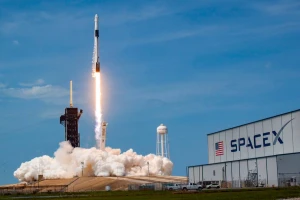- SPACE
- 1 year before
America landed on the moon 52 years later with IM-1
The IM-1 Lunar mission of the American Intuitive Machines has made a successful landing in the south polar region of the Moon, opening a new chapter in the history of space exploration.
-

- 1 year before
- Category: SPACE
- Published: 23/02/2024

A new chapter in the history of space exploration opens: IM-1 Odysseus, a Nova-C-class lunar vehicle developed by Intuitive Machines, one of America's publicly traded space companies, is close to the south pole of the Moon, landed in the crater Malapert-A, which has high scientific potential. Although he did not make an announcement that he had successfully made a soft landing, he managed to give an albeit weak signal after landing.
This important step represents the first soft landing on the Moon in American space exploration since the Apollo 17 mission. The IM-1 mission carries both commercial payloads and NASA's science and technology payloads. These payloads aim to pave the way for a sustainable human existence on and around the Moon.
The landing took place in February 2024, specifically on February 23, at 02:23 Turkish time. This historic event, broadcast live by broadcasters such as IM and NASA and Barış Özcan, reached millions of space enthusiasts around the world.
The Odysseus is equipped with automatic landing and hazard detection technology so that it can carry itself to a second landing site if necessary. As part of the mission, shortly before landing, when it was about 30 meters above the lunar surface, it dropped a camera-equipped CubeSat called EagleCam onto the lunar surface. This CubeSat aims to capture the first third-person images of a lunar landing.
This successful landing once again highlights the importance of the south polar region of the Moon as a potential location for future manned Moon bases. The region was chosen because of its flat land structure and potential resources. This suggests that the south pole of the Moon is in a strategic position that could harbor water and other vital resources.
These developments indicate that the south pole of the Moon represents a new frontier for both scientific research and potential human habitation. IM-1's success opens the doors to a new era in space exploration and expands humanity's vision of exploring the Moon and beyond.





Write Comment